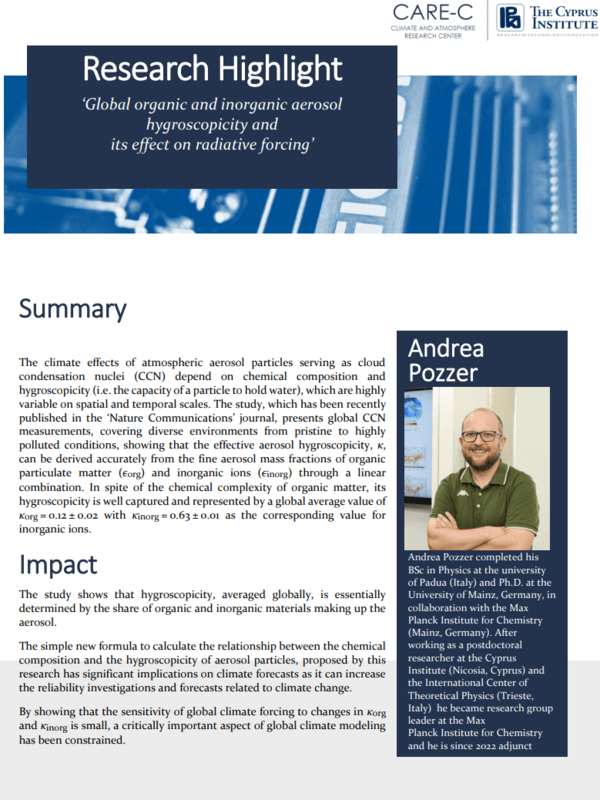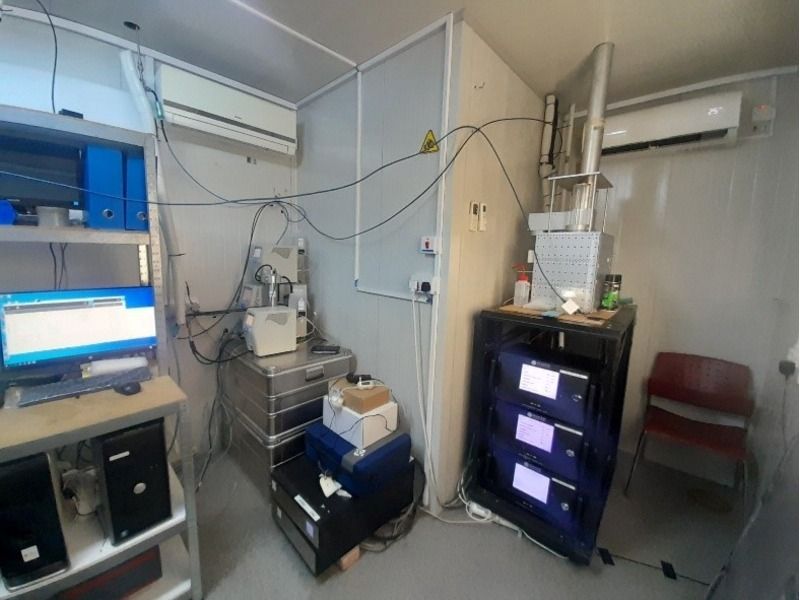EMME-CARE
A regional Centre of Excellence for climate and atmosphere research in the Eastern Mediterranean and Middle East region.
What We Do
Our Latest News
-
![The ACCEPT project has been concluded on 12 April, 2024]()
The ACCEPT project has been concluded on 12 April, 2024
May 16, 2024 -
![The Spring particles In Cyprus- SPICY campaign launched]()
The Spring particles In Cyprus- SPICY campaign launched
May 14, 2024 -
![Strong CARE-C representation at the 2024 EGU General Assembly]()
Strong CARE-C representation at the 2024 EGU General Asse…
April 30, 2024 -
![Dust event of 21st April 2024, monitored by the Cyprus Atmospheric Observatory (CAO) of CARE-C]()
Dust event of 21st April 2024, monitored by the Cyprus At…
April 25, 2024 -
![CARE-C’s CAO school presentation for Earth Day]()
CARE-C’s CAO school presentation for Earth Day
April 22, 2024 -
![CARE-C at the 2024 sCYence Fair]()
CARE-C at the 2024 sCYence Fair
April 18, 2024
Research Highlight

Global organic and inorganic aerosol hygroscopicity and its effect on radiative forcing
The climate effects of atmospheric aerosol particles serving as cloud condensation nuclei (CCN) depend on chemical composition and hygroscopicity (i.e. the capacity of a particle to hold water), which are highly
variable on spatial and temporal scales. The study, which has been recently published in the ‘Nature Communications’ journal, presents global CCN measurements, covering diverse environments from pristine to highly polluted conditions, showing that the effective aerosol hygroscopicity, κ, can be derived accurately from the fine aerosol mass fractions of organic particulate matter (ϵorg) and inorganic ions (ϵinorg) through a linear combination. In spite of the chemical complexity of organic matter, its hygroscopicity is well captured and represented by a global average value of κorg = 0.12 ± 0.02 with κinorg = 0.63 ± 0.01 as the corresponding value for inorganic ions.
Find us
Cyprus Institute
2121, Aglantzia
Nicosia, Cyprus










